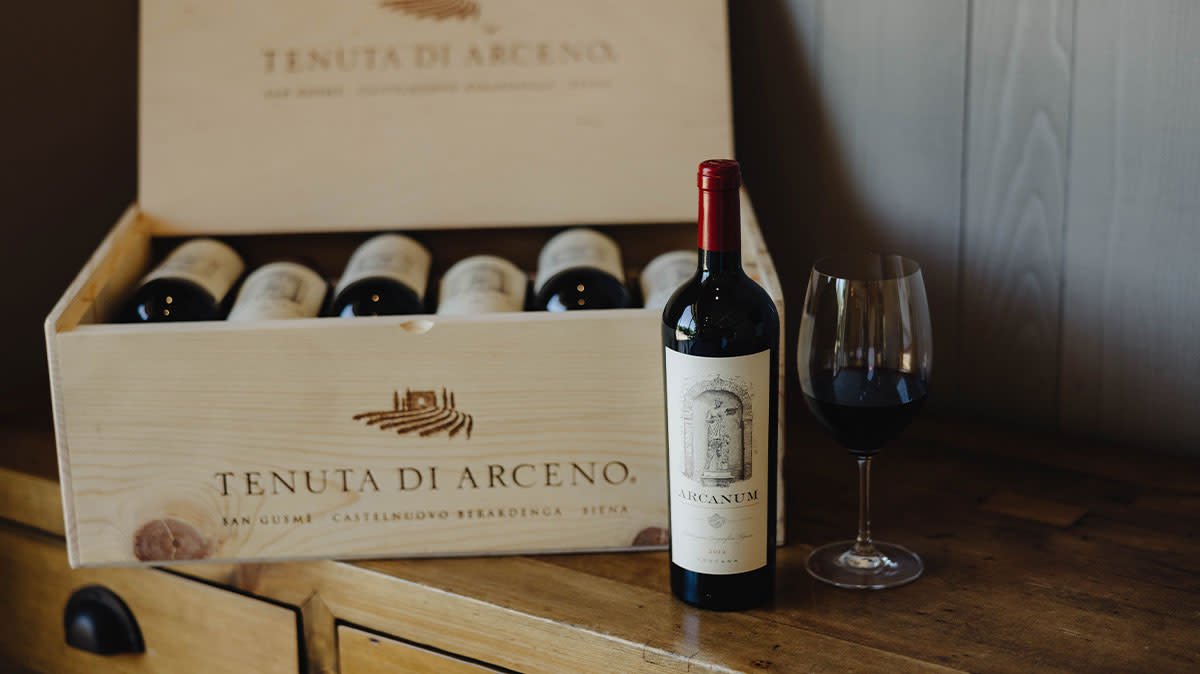The Inconvenient Truth About Tuscany’s Stellar Cabernet Franc

This story is from an installment of The Oeno Files, our weekly insider newsletter to the world of fine wine. Sign up here.
Cabernet Franc gets around in more ways than one. The parent of four of the other grapes used in Bordeaux, (Cabernet Sauvignon, Merlot, Malbec, and Carménère) it is grown in just about every New World wine region for use in blends or as a single varietal. It’s also bottled on its own in Loire Valley appellations Bourgueil and Chinon and as a blending grape in Bordeaux. Across the border in Italy, Cabernet Franc was primarily confined to the north, where its challenging ripening process often resulted in a sharp, green flavor profile and a less-than-favorable reputation. All that changed with the rise of Super Tuscans; although Cabernet Franc was initially planted in small amounts in Bolgheri and elsewhere in Tuscany, it has really hit its stride recently in high percentage blends and monovarietal wines. While its fortunes back home in France have languished for years, Cabernet Franc is now the star of the show thanks to a critical mass of high-end bottlings in Tuscany.
More from Robb Report
How a Young Winemaker Took Over a Legendary Napa Winery-and Succeeded
One of Natural Wine's Biggest Advocates Isn't Into Natural Wine Anymore-Here's Why
What’s fueling this newfound interest and success for Cabernet Franc? Climate change. With rising temperatures, dry summer months, and other extreme weather conditions, grape varieties like Merlot and Cabernet Sauvignon can struggle. In contrast, Cabernet Franc, which is naturally late-ripening and resilient to adverse weather, benefits from the warmer climate, maintaining longer hang times for optimal ripening and showcasing its versatility in challenging circumstances. Changing climactic conditions bring unstable weather patterns, so an extremely hot and dry year can be followed by one that is cool and wet. Fortunately, the variety is suited to either eventuality. “Cabernet Franc shows resilience against the heat that forms raisins, and in colder, wetter years, it effectively resists botrytis,” says Lawrence Cronin, winemaker at Tenuta di Arceno in Tuscany. Pioneers of Cabernet Franc in central Tuscany, Tenuta di Arceno planted its first vines of the variety in 1998. By 2002, Cronin’s first year there, the estate had just under three acres of it and then gradually expanded its footprint by regrafting Merlot vines to Cabernet Franc between 2004 and 2007 and planting more Cabernet Franc over the years.
By 2016, the first year that Tenuta di Arceno’s Arcanum was bottled as 100 percent Cabernet Franc, the estate’s holdings of the grape had grown to 42 acres. Cronin considers it a blend of Cabernet Franc, as it is made from 12 distinct blocks on the property. “The idea of producing a single-varietal Cabernet Franc arose during a blending session,” he tells us. “Each block offered a unique expression, showcasing varying degrees of supple fruit and mineral and herbal characteristics; it was at this juncture that we recognized the potential to craft a beautiful wine solely from Cabernet Franc.” Since its inception in 2002, Arcanum’s usual composition was somewhere between 50 and 70 percent of the variety alongside Merlot, Cabernet Sauvignon, and Petit Verdot.

Tenuta di Arceno is not alone in its dedication to the variety. Fantastic versions abound, including Podere Forte Guardiavigna, Tenuta Guado al Tasso Matarocchio, Poggio al Tesoro Dedicato a Walter Bolgheri Superiore, and Ca’Marcanda Magari Bolgheri from Angelo and Gaia Gaja’s Tuscan estate, which is made with around 80 percent Cabernet Franc. Gaia Gaja points out that when her father started this project in Bolgheri, they had more Merlot, which has since been supplanted by Cabernet Franc. “Based on our 25 years of experience producing Cabernet Franc, we’ve found that it’s a variety that adapts well to Bolgheri,” she says. “It ripens fully and consistently, always showcasing good acidity, expressive fresh aromas, and red fruit rather than black.”
Podere Forte’s owner Pasquale Forte is another strong proponent of the variety. He, too, had cultivated more Cabernet Sauvignon, Merlot, and Petit Verdot for blends, but over time has adjusted his Guardiavigna to a monovarietal bottling. “Cabernet Franc has always been better performing,” Forte says. He cites his vineyard’s 1,400-foot-plus altitude, wide day-to-night temperature swings, relatively cool September and October temperatures, and his vines’ deep roots as factors that aid in ripening despite sometimes extreme summer heat. That said, Forte has taken to utilizing techniques such as installation of shading tents beside vineyard rows to reduce the effects of the sun and slow down the speed of ripening to maintain balance. “We can wait for the perfect moment of ripening, probably the most important factor to having a great, balanced Cabernet Franc,” he says.
Cronin credits Tenuta di Arceno’s altitudes of 1,150 to almost 2,000 feet and its varied soils and microclimates for the “beautiful complexity” he can achieve in Arcanum. “In cooler years, the flavors tend to showcase notes of sweet mint and cypress, while warmer years emphasize fruit flavors,” he says. “It ripens at just the right time, neither too early nor too late, ensuring optimal harvesting conditions.” While the wily variety may have had difficulty truly putting down roots in the past, it looks like Cabernet Franc has found a home in Tuscany and is here to stay.
Do you want access to rare and outstanding reds from Napa Valley? Join the Robb Report 672 Wine Club today.
Best of Robb Report
Why a Heritage Turkey Is the Best Thanksgiving Bird—and How to Get One
The 10 Best Wines to Pair With Steak, From Cabernet to Malbec
Sign up for Robb Report's Newsletter. For the latest news, follow us on Facebook, Twitter, and Instagram.

